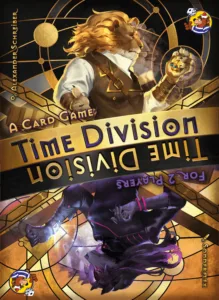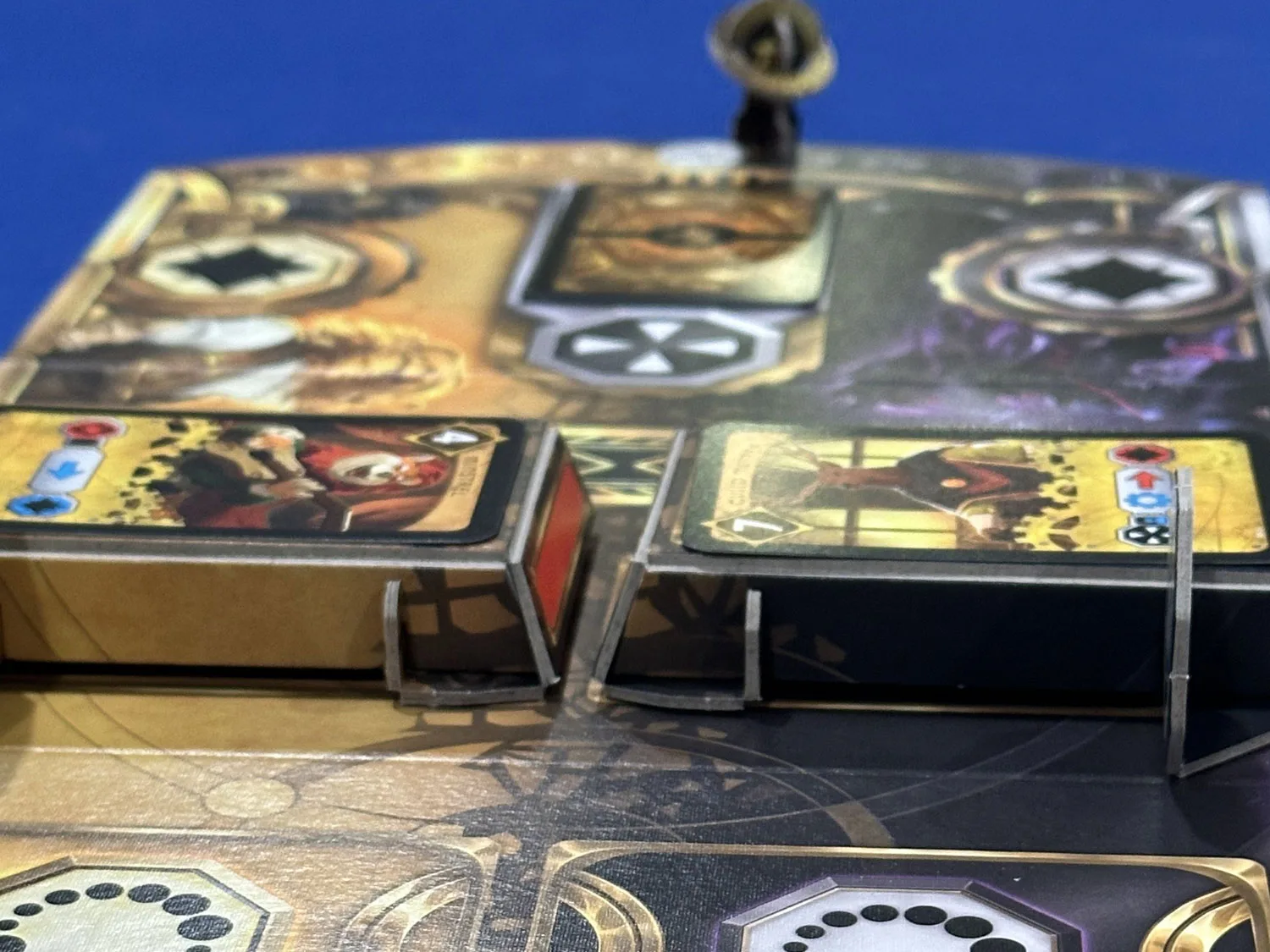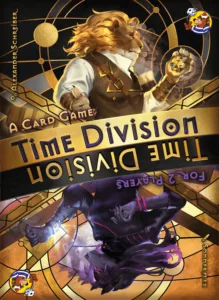 While the board-game landscape is flooded with games listed “2-4 players,” a game that is specifically designed for just two will make us sit up and take notice. Time Division, the latest from CGE imprint HeidelBÄR, puts a pair of gamers in the role of time agents responsible for bringing harmony back to the timeline, by influencing different people in various time eras. Does Time Division make it back to the present time with success, or does it get lost in the currents of history, doomed to drift for all eternity?
While the board-game landscape is flooded with games listed “2-4 players,” a game that is specifically designed for just two will make us sit up and take notice. Time Division, the latest from CGE imprint HeidelBÄR, puts a pair of gamers in the role of time agents responsible for bringing harmony back to the timeline, by influencing different people in various time eras. Does Time Division make it back to the present time with success, or does it get lost in the currents of history, doomed to drift for all eternity?
Gameplay Overview:
In Time Division, each player takes on the role of one side of a temporal war, exploring a particular era in history. The 18 cards representing an era are shuffled up, and 3 cards are dealt to each player. Of these three cards, a player keeps one, gives the other to their opponent, and discards the last one to an Independent area.

With their 6 cards in hand, players decide which of their cards to play facedown to their Decision area. Each card has an influence value (from 0 to 10) and a special power. After both players reveal their card, the player with the higher influence value chooses one card to move to the score area of the player who played it, and to activate the power of the other card. These powers could move cards between the various areas on the board, score extra cards, or negate other card powers. This process repeats for all six cards in hand, with the game ending after the last cards have been played.
There are two modes for the game—one where a single era is played and another that allows for a “campaign” where all three eras in the box are explored in order. Either way, whoever scores the most points at the end of the game is declared the winner.

Game Experience:
At the core of Time Division, there is the potential for an interesting game based on some of the mechanics. You have imperfect knowledge of your opponent’s hands, but you are not completely in the dark, since you feed cards to your opponent during card selection. Knowing half of the opposing hand can lead to interesting choices for your own card plays. We really enjoyed the choice aspect of Time Division, forcing players to potentially give their opponents a beneficial effect in order to score their own higher-value card. There’s are many factors to the decision-making, and in a game that only lasts 6 rounds, each choice has to be optimal.

However, this solid set of mechanics must be supported by the game implementation, and it’s just not here. While we are usually averse to criticizing the graphic design of games, the work on Time Division cannot be ignored. The game relies completely on iconography for describing the play areas and the card powers, which makes the game extremely difficult to pick up. No player aids were included, which makes deciphering the card powers during play even more frustrating. While we understand the reasoning behind relying solely on icons to make the game language-independent, it does not allow for fast gameplay if players have to continually have to pass the rulebook back and forth. It would have been far better to just put the game text right on the card, if only to make the game flow better and play faster.

As stated above, there’s definitely potential for some deep strategy for drafting. If you know all the cards, and how the different powers and values and combos all jigsaw together in a bigger picture, you can make good decisions in what cards you’re giving away, what cards you are burying, and what cards you are keeping. However, simply put, Time Division is not interesting or exciting enough to get to that level. It’s unsure of what it wants to be—a deep and strategic drafter, or a quick-and-easy card player. This inability to figure out its role on the tabletop leads it to fall short on both aspects.
The time periods presented in the game box are fun, most notably the 80s—the art was creative and the theme of that era definitely shone through. We did find it hard to find some sort of connection between the three eras (Ancient Egypt, the Dark Ages, and the aforementioned 80s) but this leaves room for small expansion packs, to give players some choice in which time periods they want to explore. The card powers all had some connection (albeit sometimes remote) to the era they were in—the 80s were all about economy, while the dark ages were all about making difficult choices. We found this design choice to be pretty clever.
Final Thoughts:
Time Division is a quick 2-player drafting game, which has a surprising level of depth, but only after you figure out and remember what all the different cards do (usually after multiple plays). However, there’s not much here that gets us wanting to return it to the table enough for that to happen.
Final Score: 2.5 Stars – A promising idea with a nucleus of interesting mechanics, but falls short on implementation.
 Hits:
Hits:
• Interesting select/score choice
• Very fast gameplay
Misses:
• Iconography needs a major upgrade
• Multiple player aids are an absolute must
• Only becomes interesting after a large number of plays
Source: Board Game Quest





